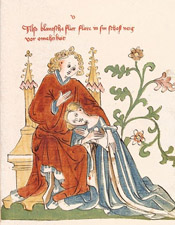Floire and Blancheflor
, translated by Kline, A. S. (contact-email)
Floire et Blancheflor is a narrative poem from the Loire Valley, traditionally ascribed to Robert d’Orbigny, with potential inspiration from Neema and Noam, a story within The Thousand and One Nights. The origins of the tale date back to c. 1160 AD, with the first European iterations appearing in an aristocratic Old French dialect. Its popularity peaked between the 13th and 14th centuries, with translations and adaptations spreading across the continent in various vernaculars. The plot, embodying courtly love and chivalric adventure, recounts the romance of the titular characters: Floire, a Christian prince, and Blancheflor, a Saracen princess. Their narrative, surmounting the divides of religion and class, typified the period’s literary romanticism. The story had a significant influence on the medieval narrative tradition and shaped the cultural imagination of the era.

Kline, A. S.
Support Open-Access:
Your contribution keeps our classical translations available to all. Every dollar helps support classics education and funds the expansion of our catalogue. Value what we do? Donate now.
File Downloads:
© Copyright, All Rights Reserved. This work may be freely reproduced, stored and transmitted, electronically or otherwise, for any non-commercial purpose. Conditions and Exceptions apply.